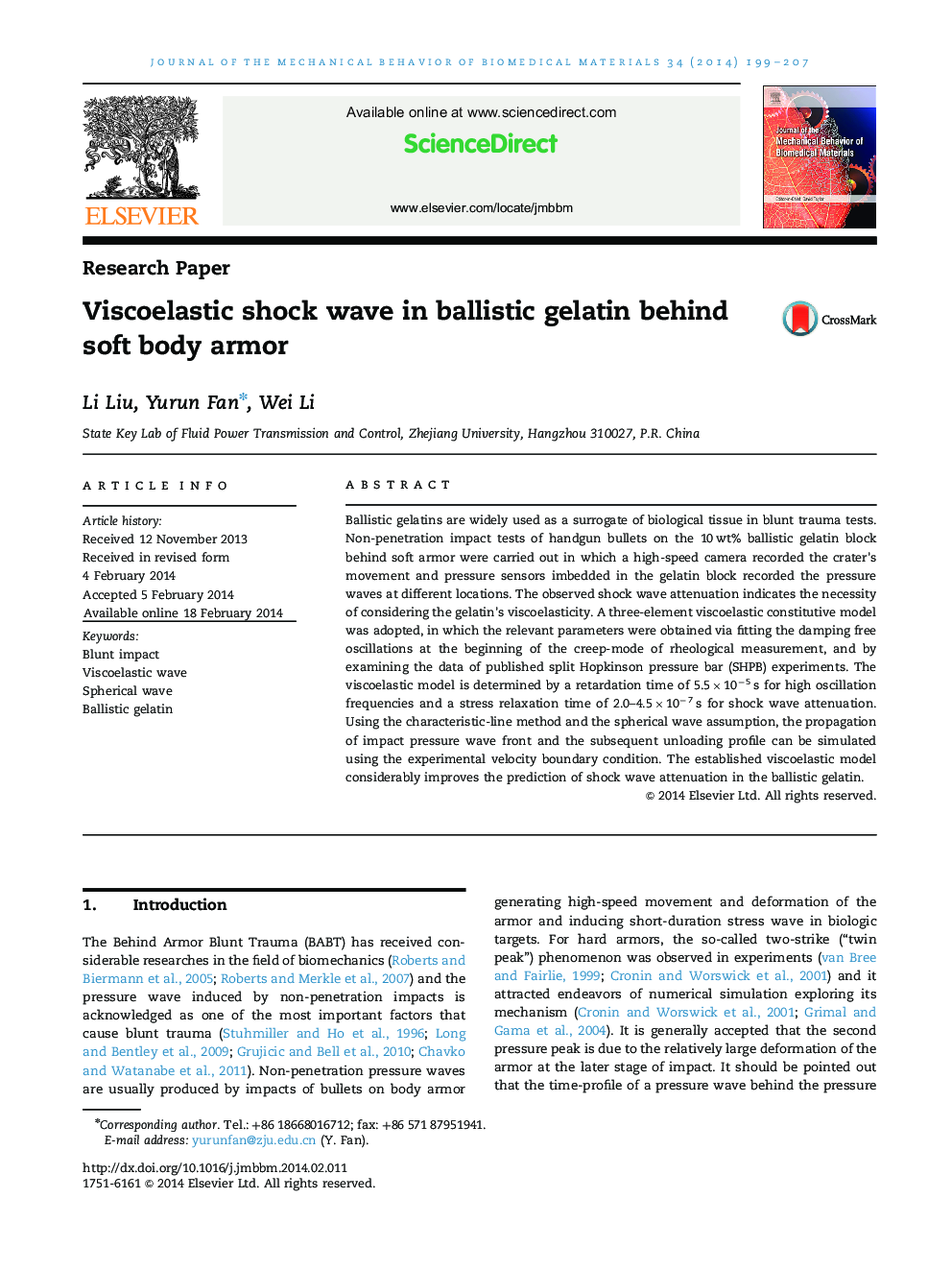| Article ID | Journal | Published Year | Pages | File Type |
|---|---|---|---|---|
| 810766 | Journal of the Mechanical Behavior of Biomedical Materials | 2014 | 9 Pages |
•A viscoelastic model and corresponding parameters are established for gelatin.•The solution of spherical viscoelastic shock wave propagation is presented.•The viscoelastic wave model considerably improves the prediction of shock wave attenuation in ballistic experiments.
Ballistic gelatins are widely used as a surrogate of biological tissue in blunt trauma tests. Non-penetration impact tests of handgun bullets on the 10 wt% ballistic gelatin block behind soft armor were carried out in which a high-speed camera recorded the crater׳s movement and pressure sensors imbedded in the gelatin block recorded the pressure waves at different locations. The observed shock wave attenuation indicates the necessity of considering the gelatin׳s viscoelasticity. A three-element viscoelastic constitutive model was adopted, in which the relevant parameters were obtained via fitting the damping free oscillations at the beginning of the creep-mode of rheological measurement, and by examining the data of published split Hopkinson pressure bar (SHPB) experiments. The viscoelastic model is determined by a retardation time of 5.5×10−5 s for high oscillation frequencies and a stress relaxation time of 2.0–4.5×10−7 s for shock wave attenuation. Using the characteristic-line method and the spherical wave assumption, the propagation of impact pressure wave front and the subsequent unloading profile can be simulated using the experimental velocity boundary condition. The established viscoelastic model considerably improves the prediction of shock wave attenuation in the ballistic gelatin.
